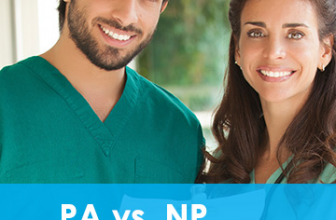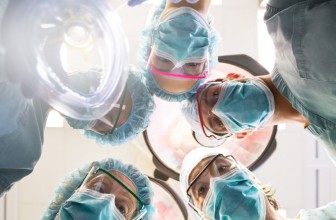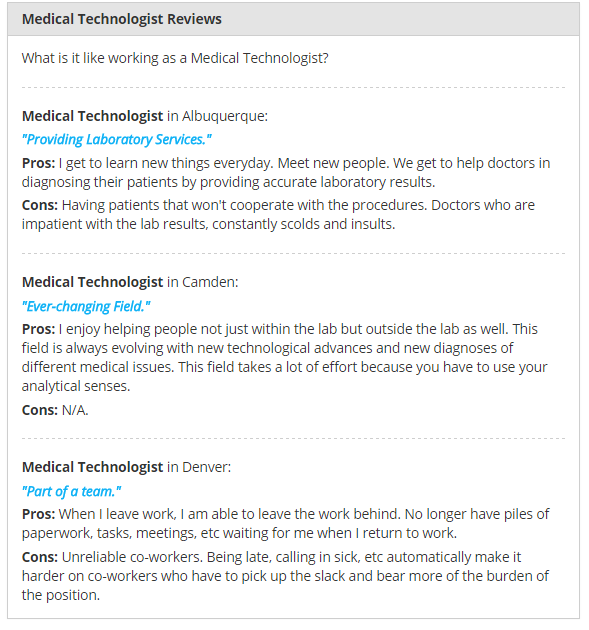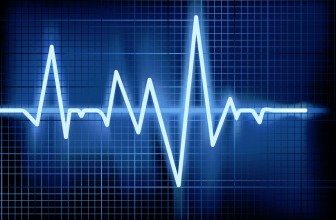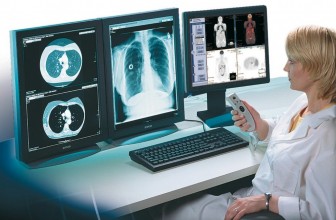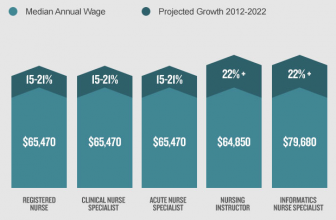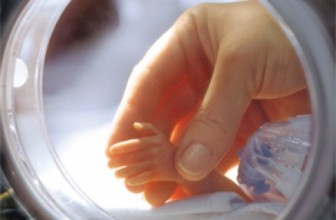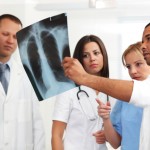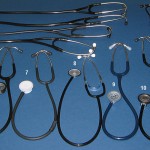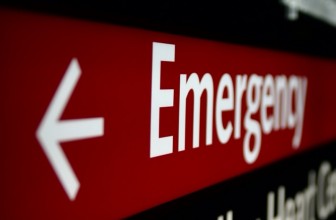What is NANDA Nursing Diagnosis?
Nanda nursing diagnosis is a professional judgment grounded on application of clinical knowledge essential in determining the potential or actual experiences and responses to life processes and health problems. Nanda approved diagnosis is applicable to families, individuals or communities. The array of nursing diagnoses includes the commonly applied interventions which caregivers choose to implement to a particular patient.
The standardized NANDA nursing language is a set of terms commonly used in a profession understood in common. Use of these common terms promotes the safety of patients by allowing nurses to understand the patient’s needs aspects faster and efficiently. By using these terms, nursing staff can avoid sifting through long narratives and therefore easily determine the patient’s needs and also plans for the course of care.

A nurse is one of the primary caregivers in the hospital and other healthcare facilities. And in most cases he or she is the first person to interact with the patient and also the healthcare specialist that spends more time with a patient. Due to this fact, a nurse will play a crucial role in diagnosing the problem of the patient and also in the treatment. This fact is one of the key reasons that led to the development of the NANDA Nursing Diagnosis.
Different people may interpret nursing diagnosis in various ways depending on how they understand it. However, a nursing diagnosis is a clinical judgment about a community, family or individual responses and experiences with potential or actual health problems. The diagnosis provides a nurse, or any other healthcare gives in the same capacity with the basis for selection of the right nursing intervention to achieve the desired outcome for which the nurse will be accountable. Nursing diagnosis can also be defined as a judgment that is based on a nursing assessment (comprehensive assessment).
NANDA is the leading organization that defines, integrates, and disseminates standard nursing diagnoses globally. Although several other institutions in different parts of the world perform an almost similar role, NANDA is the oldest of them all, and it has come to be accepted and relied upon by millions of nurses across the world. NANDA (North America Nursing Association) is now an international body that is more popularly known for its annual and regularly updated nursing diagnosis lists.
Contents:
- What is NANDA Nursing Diagnosis?
- Purpose of the Nursing Diagnosis
- The Importance of Using the NANDA Nursing Diagnoses
- The Process of Conducting a Nursing Diagnosis
- Types of Nursing Diagnoses
- Five Labels /components of the NANDA Nursing Diagnosis
- The NANDA Nursing Diagnosis List
- The NANDA Diagnosis Care Plans
- Nursing Diagnosis Book from NANDA
- What Else You Should Know About NANDA Nursing Diagnosis
Purpose of the Nursing Diagnosis
There are several steps in the nursing process, and the steps start even before the patient enters the care of a nurse. Nursing diagnosis fulfills the second important step in the nursing process and without it, the other steps would not be efficiently performed and hence meaning that the patient would not be able to get the care that they deserve. Nursing diagnosis is a guiding methodology when planning for care and it helps to better the communication between the caregivers and their patients. It provides a standardized language to be used and hence prevents any assumptions and hence increasing accuracy in the practice.

Diagnosis also helps the nurse and other members of the interdisciplinary healthcare team to understand the problems of a client entirely. And so its purpose is to ensure that the recipient or patient gets a patient-focused care rather than being given a nurse-focused or medical-focused care that is only based on symptoms or routine practices. Apart from care, the purpose of this diagnosis is to ensure that the patient will leave the health facility fully satisfied with the level and quality of service offered.
The Importance of Using the NANDA Nursing Diagnoses
Although the NANDA Diagnosis lists have been in use for some decades now, many people including some nurses and other healthcare professionals still do not understand the importance of using them. However, the fact of the matter is that no intervention will be effective without them in the world of today. And it will be very hard for the nursing role to be successful. Apart from this, the following are a few things that make the use of these diagnoses important for healthcare:
- The NANDA helps a nurse to establish an appropriate plan to take care of patients and hence ensures that they get the best care possible.
- It contributes to promoting global standardization of nursing care by encouraging the same quality of healthcare that you would get in developed countries like the USA in the developing or third world countries.
- NANDA nursing diagnosis also helps the important nursing functions to keep up with the changing times and changing needs of patients as more and different health conditions continue to come up.
- They provide a learning platform for new nurses, and they also act as an important source of reference in the nursing fraternity.
- NANDA nursing makes things simpler and faster because by being able to identify the problem of a patient within a short time a nurse will be able to serve more people in a day. This might not be the silver bullet that will help solve the global nursing shortage, but it helps significantly.
- Helps to eliminate the possibility of making errors in diagnosis since a nurse does not have to assume anything, especially when using the list.
The Process of Conducting a Nursing Diagnosis
Although there are different ways of conducting the diagnosis, there are certain things that the process has to cover to be considered useful. However, what matters is the result and not necessarily how it is done. But to ensure that you get the diagnosis right and to make it easier the following is the general process that is followed.
- Nursing assessment: This is the first step, and it involves the collection of the data that is relevant in the caring of the intended recipient of the diagnosis that in this case can be an individual, family or community. Some of the data collected regard their response to actual or potential health problems.
- Cluster and interpretation of data: It is important for the nurse to gather and assess the data before the nurse can plan or implement it.
- Hypothesis/Alternative generations: The third step in the process involves the nurse coming up with some possible alternatives that can represent the observed patterns.
- Planning: Planning is perhaps the most important step in the nursing diagnosis planning process, and it involves determining realistic outcomes and the interventions that will support the attainment of those intended outcomes.
- Implementation and Evaluation: Implementation is putting the plan or the result of the diagnosis into action, and it is done in collaboration with the care receiver. Evaluation involves studying movement towards the intended outcomes and adjustments made where necessary to reevaluate the appropriateness of the diagnosis made.

This process might look quite complex and lengthy, but the list of NANDA diagnosis makes it simpler and more straightforward. In fact, most nurses do not have to go through all these steps as the lists simplify things by providing the nursing diagnosis for different conditions and nursing procedures.
Types of Nursing Diagnoses
Over the years, NANDA has developed several nursing diagnosis lists but even with the many lists currently available there are only four types of nursing diagnoses. And although some practices may categorize the diagnosis into more types or even fewer the following four encompass everything that should be covered in the diagnoses.
- Actual: This type of diagnosis addresses the human response within a patient to a health condition, life situation or disease. A good example of this is hypothermia and pain. This diagnosis must be followed through the definition of factors that relate to the “actual” condition being diagnosed.
- Health Promotion: Health promotion is a clinical judgment that entails a patient’s readiness, motivation or a desire for a better state of health or a factor than can lead to an overall improvement of their health. This kind of diagnosis will not require any current level of patient wellness.
- At-Risk: This type of diagnosis will encompass likely or potential risk factors that a patient is faced with like, for example, the danger of getting an infection. An important thing to note with this type of risk is that NANDA does not allow “actual” diagnoses to be interchangeable with “at-risk” diagnosis for example “hypothermia” cannot be swapped for “at-risk of hypothermia.”
- Syndrome: The fourth type is syndrome nursing, and it involves clustering many nursing diagnoses together. Nursing care should then be provided by applying similar interventions to the entire group or cluster.

Five Labels /components of the NANDA Nursing Diagnosis
NANDA provides comprehensive resources that cover all aspects of nursing, and they are always coming up with improvements to make things even easier for the caregivers. However, there are five important labels or components of these diagnoses that will always remain as they are. As a nurse, they are among the most important things that you should keep in mind even when using the diagnosis lists. The five components or labels are.
- Diagnostic label. This entails the actual diagnosis that has been approved by NANDA, and it can include descriptors such as decreased, impaired, deficient and compromised.
- Related Factors. It involves conditions or etiologies that can be treated through the intervention that falls within a nurses’ legal scope of practice. In short, this label defines the conditions that a nurse can and is allowed to treat legally, and they are also qualified for the same. The etiology or condition that a nurse can be able to treat through intervention is identified in the initial nursing assessment.
- Definition. This is the human response characteristic that has been approved by NANDA. The label provides a clear and precise description that helps to delineate its meaning so that it can easily be differentiated from similar diagnoses.
- Risk factors. Risk factors is a label that encompasses the factors that can and imposes vulnerability on the community, family or an individual. The risk factors include elements such as genetic, environment, and psychological or physiological factors.
- Diagnostic statement support. This is the data that supports the nursing diagnosis and is vital to the success of the process. The data is collected during the assessment phase.
The NANDA Nursing Diagnosis List
The NANDA nursing diagnosis list is simply a list as the name suggests that is designed to guide a nurse in the diagnosis of different conditions and come with the right plan for intervention to offer the patient the required and necessary care. NANDA has prepared lists for most conditions, diseases, and nursing procedures. They have new lists every year, for example, there is NANDA nursing diagnosis 2013 and also NANDA nursing diagnosis 2014.
Although a list can contain some of the items or things from the previous years, it also has a plenty of updates and advancements that are in tune with the ever-changing nursing environment. There are also nursing lists that are made to cover a particular period, for example, the diagnoses list for 2012-2014. The lists come in different forms, and you can choose the entire list that contains all the NANDA diagnoses, a list for a particular condition or one for a particular domain such as Sexuality or Life Principles.
The approved diagnoses list includes:
1. Exchanges
• Excess nutrient: nutritional higher metabolic requirements.
• Nutritional deficiency: lower nutritional intakes which are below metabolic requirements.
• Risk of excess nutrition: chances of higher nutrient intake metabolic needs.
• Risk of infections: risk of pathogens contamination.
• Impaired body temperature risk
• Hypothermia: temperature below the normal limits
• Hyperthermia: body temperatures above the normal limits
• Ineffective thermoregulation: body temperatures fluctuation between hyperthermia and hypothermia
• Dysreflexia: non inhibition of influx of sympathetic nervous systems faces noxious stimuli which threaten life of a person with spinal cord up to D7 or even below.
• Constipation: changes in the normal bowel habits often characterized by decrease of stool and emission of hard and dry stool.
• Decreased cardiac output
• Ineffective airway clearance
• Ineffective mode of breathing: the mode of breathing doesn’t allow correct filling or emptying of lungs.
• Inability to maintain spontaneous breathing.
• Intolerance assisted ventilation cessation.
• Risks of accident
• Choking risks
• Risks of poisoning: higher risks of getting into contact with harmful substances in enough quantities to cause poisoning.
• Risk of trauma
• Aspiration suction risk
• Immobility syndrome risk
• Damage of tissue integrity risk to skin damages
• Disruption of energy field
2. Communication
• Impairment of verbal communication: inability or difficulty in understanding languages in interpersonal reactions.
3. Relations
• Social interaction disruptions: excessive, ineffective or inadequate social relations
• Social isolation
• Risk of loneliness
• Disturbance in role performance
• Disturbance in parenting exercise
• Sexual dysfunction
• Family dynamics disruption
• Failure in caregiver role performance
• Family dynamics disruptions
• Sexuality disruption: changes in sexual health.
4. Values
• Spiritual distress
• Spiritual well being: possibly updating.
5. Choice
• Ineffective individual dealing strategies
• Failure to adapt to health status changes
• Coping strategies defensive: the defensive system against things that seem to threaten positive self image and this results to systematic oneself overestimation.
• Denial not constructive
• Inefficient family coping strategies
• Ineffective community coping strategies
6. Movement
• Impaired physical mobility
. Peripheral neuromuscular dysfunction risk
• Injury risk in perioperative
• Intolerance to activity
• Fatigue
• Activity intolerance risk
• Sleep patterns disruptions
• Lack of leisure
• Total or partial disability to eat
• Partial or total swallowing disability
• Interrupted breastfeeding
• Partial or total disability to wash
• Total or partial disability to use a toilet
• Growth and development disturbance
• Behavioral disorganization in infants
7. Perceptions
• Body image disturbance: changes in how a person view his body image
• Self esteem disturbance
• Disturbance of personal identity: inability to distinguish between oneself and the outside world.
• Altered sensory perception
• Loss of hope
• Feeling of powerlessness
8. Knowledge
• Lack of knowledge
• Environment misinterpretation syndrome
• Acute confusion
• Chronic confusion
• Operation of thought alteration
• Memory problems
9. Sensations and emotions
• Acute pain
• Chronic pain
• Mourning – grief – dysfunction
• Mourning in advance
• Violence risk against oneself and others
• Post traumatic reactions
• Rape trauma syndrome
• Anxiety
• Fear

The purpose of NANDA diagnosis nursing list
This is a useful and essential list which encourages the safety of patients by primarily standardizing evidence-based nursing diagnoses. The nursing process enables implementation of interventions with foreseeable outcomes. Presence of accurate and uniform documentation offered by utilization of NANDA nursing diagnoses helps in obtaining medical bills reimbursement.

NANDA consists of goal oriented nurses who are usually committed to continually increase quality of patient care while improving and promoting safety of patients. Furthermore, this group encourages suggestions from nonmembers on modification of the existing nursing diagnoses or creation of others. The researches which this organization conducts are always funded by the NANDA foundation.
Health care facilities preserve standardized NANDA Nursing Diagnosis List at all patient care units. Normally, the pre-printed diagnoses forms are maintained at nursing stations therefore enabling nurses to easily access course of care which they wish to implement. The pre-printed forms are usually part of a patient’s chart and therefore enable easier access by other staff members. This eventually turns to be a part of the patient’s permanent record.
NANDA nursing diagnosis 2014
The 2014 Nanda nursing diagnosis offers:
• Introductory chapters written at undergraduate nursing level. It also provides critical information useful in understanding assessment and taxonomic structure for nurses at bedside.
• A companion website which features presentations necessary for classroom and student assignments such as nursing diagnosis basics and assessments.
• New chapter focusing on the frequently asked questions (FAQs), representations and the questions received through NANDA website.
• 25 new nursing diagnosis
• Standardization of diagnostic indicators and,
• References for all submitted diagnosis
Examples of the NANDA Nursing Diagnosis List
-
NANDA Nursing Diagnosis For Hypertension

Hypertension is a medical term that is used to describe high blood pressure that is the measurement of the force exerted on the walls of your arteries as the heart pumps blood. Measurements of blood pressure are usually in millimeters mercury – mmHg – and given as two numbers (for example 20 over 80 written as 120/80mmHg. One of the two numbers can be very high. The top number is the systolic pressure which is taken to be high when it is above 140 and taken to be normal when below 120. The bottom number is the diastolic pressure which is taken to be high when it is above 90 and normal when it is below 80. Pre-hypertension is considered when the top number is between 120 and 139 and the bottom number is between 80 and 89. People with pre-hypertension have higher chances of developing high blood pressure. Doctors may require the blood pressure of people with kidney or heart problems or those who had a stroke to be much lower than that of individuals without the conditions.
NANDA provides a list with several diagnoses for this condition. One of the diagnoses is decreased cardiac output, and the expected outcome is to maintain the pressure within and acceptable range and stable cardiac frequency and rhythm. The nursing interventions for this diagnosis is measuring and monitoring pressure on both hands, assist self-care as needed among many more as may be described in the list.
Other diagnoses for hypertension include acute pain and knowledge deficit. Acute pain is from a headache related to increased pressure on the cerebral vascular, and some of the nursing interventions for this include maintaining bed rest and minimizing environmental stimuli and disruption. Knowledge deficit, on the other hand, is related to lack of information on the condition and also on self-care, and a nurse can intervene by describing the nature of the disease to the patient and the treatments available.
The nursing diagnosis for hypertension includes:
- Knowledge deficit concerned with lack of information about self-care and the disease process.
- Ineffective tissue perfusion – renal, cardiac, cerebral related to circulatory disorder.
- Pain – headache concerned with increase in cerebral vascular pressure.Ineffective tissue perfusion – renal, cardiac, cerebral related to
- Risk for reduced cardiac output linked to heightened afterload, myocardial ischemia, vasoconstriction, ventricular hypertrophy.
-
NANDA Nursing Diagnosis For Gastrointestinal System

Gastrointestinal (GI) system has two primary functions: digestion and absorption. The system also has 2 groups of organs which are the alimentary canal which is the continuous passageway starting at the mouth and ending at the anus and the accessory organs necessary in processing digestion but aren’t part of the digestion system.The nursing assessmentNursing assessment focuses on the nutritional status and digestive problems of an individual. Nutritional deficits may manifest in various body systems. Nurses must obtain data concerning the onset of the digestive problems including vomiting,
The nursing assessmentNursing assessment focuses on the nutritional status and digestive problems of an individual. Nutritional deficits may manifest in various body systems. Nurses must obtain data concerning the onset of the digestive problems including vomiting,
Nursing assessment focuses on the nutritional status and digestive problems of an individual. Nutritional deficits may manifest in various body systems. Nurses must obtain data concerning the onset of the digestive problems including vomiting,
Nursing assessment focuses on the nutritional status and digestive problems of an individual. Nutritional deficits may manifest in various body systems. Nurses must obtain data concerning the onset of the digestive problems including vomiting, nausea, and indigestion; their severity and factors that worsen or improve the problems. Obtaining 24-hour dietary recall can help obtain nursing care planning subjective data. The nurse should ask questions regarding to the weight, appetite, the ability to swallow, to taste and to chew, pain and abdominal cramping. They should also inquire about bowel habits which include constipation, gas, blood in stool and diarrhea.Physical assessment involves distention and symmetry inspection, auscultation of every quadrant for the presence of bowel sounds, percussions to identify gaseous or fluid distention and palpation for tenderness, presence of masses and the size of major organs.
Physical assessment involves distention and symmetry inspection, auscultation of every quadrant for the presence of bowel sounds, percussions to identify gaseous or fluid distention and palpation for tenderness, presence of masses and the size of major organs.
The nursing diagnosis
The common NANDA diagnoses relating to GI disorders include:
- Activity intolerance concerning fatigue and weakness.
- Constipation related to medication, pain, immobility, and reduced GI motility.
- Diarrhea linked to acute infectious process associated with intestinal hyperactivity and irritated bowel.
- Imbalanced nutrition – more than what the body requires.
- Ineffective therapeutic regimen management concerning lack of knowledge on long-term disease management and consequences of failing to follow the treatment plan and unwillingness to change lifestyle.
- Nausea linked to acute exacerbation of disease process – often relating to reduced GI motility, narcotics and GI distention.
- Pain linked to increase in gastric secretions, gastric irritants ingestion, reduced mucosal protection.
- Aspiration risk linked to enteral tube.
- Risk of fluid deficiency relating to diarrhea.
- Risk of impaired skin.
The nursing intervention
A nurse should ensure that the patient is properly nourished and hydrated. The intervention includes weight monitoring, adequate fluid intake provision, alternative forms of nutrition administration and management. Nanda Nursing intervention for GI (gastrointestinal) bleed is very common, but it is also a potentially life-threatening condition and hence making the nursing diagnosis and intervention crucial. Depending on the place of origin they can be classified as Upper or Lower GI bleeds. The potential nursing diagnoses for this condition include fluid volume deficit, ineffective tissue perfusion and also complications related to bleeding. And the nursing interventions recommended by NANDA are to administer oxygen and monitor output and intake.
If the patient has experienced GI bleed, then the immediate nursing implication involves blood replacement, IV access, monitoring urine output and monitoring hemodynamics. Other nursing measures include iced gastric lavage or iced gastric, monitoring the stool for presence of blood, maintaining NPO status, NG tube maintenance (skin integrity, suction placement). After oral nourishment, a nurse should start observations for vomiting and nausea.
Patients at a greater risk of impaired skin integrity include those experiencing diarrhea and those with IV and TPN lines, those with feeding lines. The nurse has to assess and employ measures on the skin around ostomies IV and TPN lines. Furthermore, they have to assess and measure the peripheral area to minimize risks of infections, complications, and skin breakdown.
-
NANDA Nursing Diagnosis For Pneumonia

Pneumonia is a lung parenchyma inflammation caused by infectious agents such as bacteria (Staphylococcus aureus, Pseudomonas aeruginosa, Streptococcus pneumonia, eneterobacter), viruses (influenza virus and adenovirus), Microplasma pneumonia, fungi (Candida albicans) and aspiration (hull). Pneumonia primarily occurs as a result of infections and with uncommon irritants which include the causes and unknown.
Even though over a hundred microorganism strains can cause pneumonia, there are only a few responsible for many cases. The commonest infectious bacteria and viruses are with it as a result of parasites fungi. Mixed infections which involve bacteria and viruses forms 15% of all infections in adults and 45% of the infections in children. Causative agents are not isolated in at least half of all cases despite careful testing. At times, pneumonia is applied broadly to lung inflammation – for example caused by autoimmune disease, drug reactions or chemical burns – however, this is accurately called pneumonitis.
Pneumonitis relates to lung infections. Pneumonia refers to pneumonitis which results from infections but at times it is non-infectious and has additional features of pulmonary consolidation. Pneumonia is also classified in several ways. It may be classified by how or where a person acquired it – community acquired, healthcare associated, aspiration, hospital acquired and ventilator-associated pneumonia. It can also be classified by the parts of the lung affected – bronchial pneumonia, lobar pneumonia, acute interstitial pneumonia – and the causative agent. Pneumonia in children can also be classified depending on its signs and symptoms (severe, non-severe, and very severe)
Pneumonia is a very common and it is one of the few conditions that it is almost inevitable for a nurse to encounter often. NANDA proposes three diagnoses for this condition with the first one being ineffective airway clearance that is related to secret buildup and inflammation. Nursing interventions for this include giving an oxygen therapy and helping patients sit in a position that they can breathe comfortably. The second diagnosis is impaired gas exchange, and the interventions include prevention fatigue in patients and monitoring blood gas analysis. The third one is fluid volume deficit with the interventions being monitoring fluid balance in the mucous membrane and performing oral hygiene.
Nanda nursing diagnosis for pneumonia includes:
1. Ineffective airway clearance concerned with edema formation, tracheal-bronchial inflammation and increased sputum production.
2. Impaired gaseous exchange linked to impaired oxygen blood carrying capacity.
3. Risk of spread of infections linked to insufficient secondary defenses – immune infections suppression – chronic disease malnutrition.
4. Activities intolerance concerned with the imbalance between oxygen demand and supply.
5. Acute pain related to persistent cough and parenchyma lung inflammation.
-
Psychological Nursing Diagnosis NANDA List

The psychological nursing diagnosis NANDA List is one of the most detailed of all their lists because there are many issues surrounding this condition. It is also informed by the fact that psychosocial issues are more complex to deal with and sometimes require special skills. However, the list provides different diagnoses for most of the conditions and the best-suited interventions and care plans that the nurse can provide to the patient.
Types of psychosocial disorders
There are many types of psychosocial disorders such as eating disorders which are becoming very common in the western countries. The illnesses include serious diseases such as anorexia nervosa and bulimia nervosa. The disorders are commonest in females specifically in girls. Girls who suffer anorexia nervosa fear weight gain and they therefore restrict their diet. This leads to excessive weight loss in early adulthood and can cause nutritional problems if untreated for a long time.
The psychological factor involved in the disease is a course of physical changes that girls pass through at the beginning of their puberty. Some social factors are fear of turning unfit for the society. On the other hand, Bulimia nervosa is an eating illness characterized by self-induced vomiting immediately after eating. The two diseases are treatable with psychosocial nursing. Some adjustment disorders which people face include fear of getting into a new place and nurses treat them with psychosocial therapy.
Cognitive disorders such as Parkinson’s disease, Alzheimer’s disease and others which are related to memory and solving sums. Some social factors which aggravate them include less exposure to play and practice. Short term memory often results from lack of coordination and anxiety. When a person is preoccupied with fear of some imminent actions, their brain memory cells fails to function in a proper way therefore affecting their memory.
Dissociative disorders involve memory loss that causes complete unawareness of identity. They are the most crucial and are only solved by psychosocial nursing diagnosis and some other nursing. Some psychological diseases result from other medical conditions such as HIV/AIDS, depression resulting from diabetes and disorders arising due to epilepsy. The conditions are treated by solving the root cause. Mood disorders include bipolar illnesses and primary depressive illnesses.
The NANDA Diagnosis Care Plans
After the diagnosis of a condition or disease the next step that a nurse is supposed to take in the nursing process is intervention and for this, a care plan is required. Without a care plan the response would not be as effective as intended, and sometimes it can even lead to the failure of the intervention. Apart from just providing diagnosis NANDA also provides suitable care plans that the caregiver should follow when attending to patients. As a nurse, it is vital to understand what a nursing care plan is and why you need one when handling patients or clients.
-
What is a Nursing Care Plan?
A nursing care plan is probably the most hated assignment in a nursing school. Students are often told to prepare a nursing care plan, and some of them do not bother to know exactly what it is and why it is important, but this changes once they get employed. A care plan is simply a strategy that a nurse prepares for how to take care of a particular patient the next day or for a couple of days. Besides from the diagnoses, a care plan is also one of the key things that NANDA emphasizes for the nursing process to be successful.
-
Why is The Nursing Care Plan Needed?
- This plan provides direction for personalized care of each patient and hence helps to ensure that as a nurse you give all your patients the best care possible.
- A care plan helps to ensure continuity of care as they act as a mean of communication between staff and so when the nurse changes shift the other one will know where to start from.
- They provide valuable documentation that is important when caring for the patient and can also be used for reference in future.
- Care plans can also act as a guide for assigning staff to specific clients who require certain special skills that they possess.
- They are also important for the patients as they serve as a guide during the reimbursement process. Most insurance companies will request for the care plan so that they can determine the amount of money that they will pay concerning the treatment that their client received.

The nursing plan includes:
- The date.
- Action verbs such as monitor, instruct, palpate and some other descriptive verbs.
- Content area that is the “what” and “where” of the order.
- Time element.
- Signature.
Nursing Diagnosis Book from NANDA
All the diagnosis list and interventions can be found in the Nursing Diagnosis Book from NANDA. This is a must have for all nurses and nursing students and the book provides you with most of the resources that you will need to succeed in your routine nursing duties. The book can be bought online and downloaded, but it is important to make sure that whatever you buy is updated with the latest diagnosis. To ensure this, you should consider the year and go for the most recent available. Although a nurse can study and understand all the diagnosis, you may still need to make references or check for updates and hence it is vital to own this book.
The book guides you on building personalized care plans using three step process – assessment, diagnosis, and planning for customized care. The book includes proposed nursing diagnoses for more than 1300 client symptoms, psychiatric and medical diagnoses, surgical interventions, diagnostic procedures and clinical states. Its authors Gail Ladwig and Elizabeth Ackley use Nursing Interventions Classification (NIC) and Nursing Outcome Classification (NOC) information to guide nurses in creating care plans which include desired outcomes, patient teachings, interventions and evidence based rationales.

Key features of this book:
- The book promotes evidence-based rationales and interventions by including the classic or the most recent research supporting use of every intervention.
- It provides care plans for each NANDA-I approved nursing diagnoses.
- Provides step by step instructions on how you should use the guide to planning care and guide to nursing care sections to make individualized care plans.
- The book has geriatric, pediatric, home care and multicultural interventions which are necessary for care plans.
- Have NOC outcomes and examples and suggested NIC interventions in all care plans.
- The book allows faster access to specific nursing diagnosis and symptoms with use of alphabetical thumb tabs.
- Includes care plan contractor on NANDA website for hands-on practice in making customized care plans.
What Else You Should Know About NANDA Nursing Diagnosis
- These diagnoses are accepted globally, and they act as a reference in nursing process in all the major hospitals in developed countries.
- They are always being updated with new ones added, and so it is important to keep up with the new diagnoses.
- A nurse will still need good judgment and knowledge as these diagnoses only act as a guideline and will not necessarily tell you everything you need to do.








